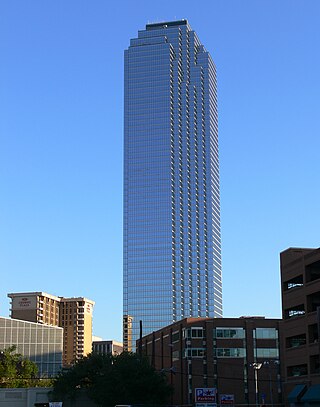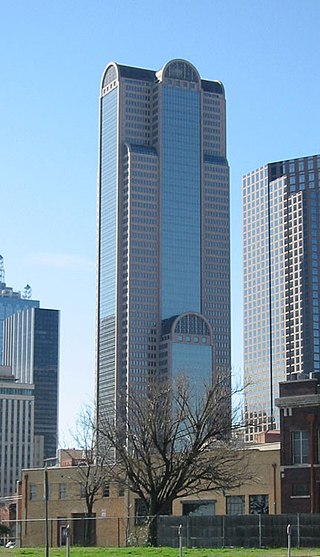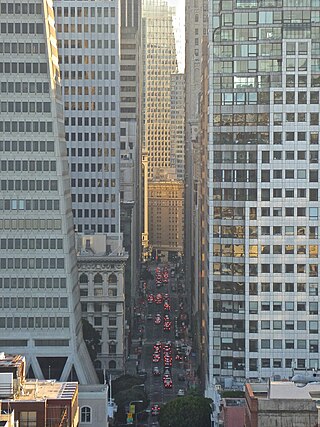
Dallas is the third-most populous city in Texas and the most populous city in the Dallas–Fort Worth metroplex, the fourth-largest metropolitan area in the United States at 7.5 million people. It is the largest city in and seat of Dallas County with portions extending into Collin, Denton, Kaufman, and Rockwall counties. With a 2020 census population of 1,304,379, it is the ninth-most populous city in the U.S. and the third-most populous city in Texas after Houston and San Antonio. Located in the North Texas region, the city of Dallas is the main core of the largest metropolitan area in the Southern United States and the largest inland metropolitan area in the U.S. that lacks any navigable link to the sea.

Downtown is the largest central business district in the city of Houston and the largest in the state of Texas, located near the geographic center of the metropolitan area at the confluence of Interstate 10, Interstate 45, and Interstate 69. The 1.84-square-mile (4.8 km2) district, enclosed by the aforementioned highways, contains the original townsite of Houston at the confluence of Buffalo Bayou and White Oak Bayou, a point known as Allen's Landing. Downtown has been the city's preeminent commercial district since its founding in 1836.

Bank of America Plaza is a 72-story, 280.7 m (921 ft) late-modernist skyscraper located in the Main Street District in the city's downtown core in Dallas, Texas, United States. It is the tallest skyscraper in the city, the 3rd tallest in Texas and the 45th tallest in the United States. It contains 1,900,000 sq ft (180,000 m2) of office space.
Renaissance Tower is a 886 ft (270 m), 56-story modernist skyscraper at 1201 Elm Street in downtown Dallas, in the U.S. state of Texas. The tower is the second-tallest in the city, the fifth-tallest in Texas, and the 47th-tallest in the United States. Renaissance Tower was designed by the architectural firm Hellmuth, Obata and Kassabaum, completed in 1974, and renovated by architects Skidmore, Owings and Merrill in 1986. Major tenants include Neiman Marcus Group, Hilltop Securities and Godwin Lewis PC.

Comerica Bank Tower is a 60-story postmodern skyscraper located at 1717 Main Street in the Main Street District in downtown Dallas, Texas. Standing at a structural height of 787 feet (240 m), it is the third tallest skyscraper in the city of Dallas. It is also the sixth tallest building in Texas and the 61st tallest building in the United States. The building was designed by Philip Johnson and John Burgee, and was completed in 1987. The structure has 1,500,000 square feet (100,000 m2) of office space.

Fountain Place is a 60-story late-modernist skyscraper in downtown Dallas, Texas. Standing at a structural height of 720 ft (220 m), it is the fifth-tallest building in Dallas, and the 15th-tallest in Texas. A new 45-story sibling tower, AMLI Fountain Place, has been built to its northwest on an adjacent lot.

The Cityplace Tower is a 42-story building located at 2711 North Haskell Avenue at North Central Expressway in the Cityplace district of Uptown Dallas, Texas (USA). The building is 560 feet (171 m) tall and has 1,400,000 square feet (130,000 m2) of office space. It is also the tallest building in Dallas outside of Downtown.
This article traces the history of Dallas, Texas,.

The Financial District is a neighborhood in San Francisco, California, United States, that serves as its main central business district and had 372,829 jobs according to U.S. census tracts as of 2012-2016. It is home to the city's largest concentration of corporate headquarters, law firms, insurance companies, real estate firms, savings and loan banks, and other financial institutions. Multiple Fortune 500 companies headquartered in San Francisco have their offices in the Financial District, including Wells Fargo, Salesforce, Uber, Gap, and Williams-Sonoma.
This article contains a timeline of major events in the history of Dallas, Texas (US). It serves as an abridged supplement to the main history article for the city and its several subarticles on periods in the city's history.

The modern history of Lethbridge extends to the mid-19th century, when the area was developed from drift mines opened by Nicholas Sheran in 1874, and the North Western Coal and Navigation Company in 1882. Prior to the development of drift mines in the area, Lethbridge, Alberta was known as Coal Banks, and was part of the territory of the Blackfoot Confederacy. The Confederacy was made up of the Kainai Nation, the Northern Peigan, the Southern Peigan (Blackfeet), and the Siksika Nation.

The architecture of Houston includes a wide variety of award-winning and historic examples located in various areas of the city of Houston, Texas. From early in its history to current times, the city inspired innovative and challenging building design and construction, as it quickly grew into an internationally recognized commercial and industrial hub of Texas and the United States.
This article traces the history of Dallas, Texas (USA) during the city's modern period from 1996 to the present.

Downtown is the central economic, political, and cultural district of the city of Providence, Rhode Island. It is bounded on the east by Canal Street and the Providence River, to the north by Smith Street, to the west by Interstate 95, and to the south by Henderson Street. The highway serves as a physical barrier between the city's commercial core and neighborhoods of Federal Hill, West End, and Upper South Providence. Most of the downtown is listed on the National Register of Historic Places as the Downtown Providence Historic District.
The architecture of the U.S. state of Texas comes from a wide variety of sources. Many of the state's buildings reflect Texas' Spanish and Mexican roots; in addition, there is considerable influence from mostly the American South as well as the Southwest. Rapid economic growth since the mid twentieth century has led to a wide variety of contemporary architectural buildings.

The Dallas Hilton, constructed as the Hilton Hotel and today operating as the Hotel Indigo Dallas Downtown, is a historic hotel opened in 1925, located at the corner of Main Street and S. Harwood Street in downtown Dallas, Texas (USA). The hotel is a contributing property in the Harwood Street Historic District and Main Street District. It is also located across the street from Main Street Garden Park.

The Texas oil boom, sometimes called the gusher age, was a period of dramatic change and economic growth in the U.S. state of Texas during the early 20th century that began with the discovery of a large petroleum reserve near Beaumont, Texas. The find was unprecedented in its size (worldwide) and ushered in an age of rapid regional development and industrialization that has few parallels in U.S. history. Texas quickly became one of the leading oil-producing states in the U.S., along with Oklahoma and California; soon the nation overtook the Russian Empire as the top producer of petroleum. By 1940 Texas had come to dominate U.S. production. Some historians even define the beginning of the world's Oil Age as the beginning of this era in Texas.

Total Plaza is a tower in Downtown Houston, Texas, one block from the Allen Center complex. The building, managed by Brookfield Properties, opened in 1971. The 35-story building, designed by the architect Lloyd, Morgan & Jones, was renovated in 1981 and 1996, and features a mirror-finished reflective glass on its exterior. Each floor has about 24,000 sq ft (2,200 m2), with a total of 847,200 sq ft (78,710 m2). The building is named after its major tenant, Total Petrochemicals USA, a subsidiary of TotalEnergies SE. The complex was formerly the headquarters of the Metropolitan Transit Authority of Harris County (METRO).

Downtown Dallas is the central business district (CBD) of Dallas, Texas, United States, located in the geographic center of the city. It is the second-largest business district in the state of Texas. The area termed "Downtown" has traditionally been defined as bounded by the downtown freeway loop, bounded on the east by I-345 (although known and signed as the northern terminus of I-45 and the southern terminus of US 75, on the west by I-35E, on the south by I-30, and on the north by Woodall Rodgers Freeway.















